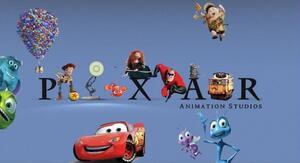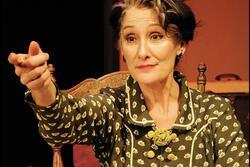The Ladies of Pixar
We continue looking at pop culture and role models with this post from one of our Rising Voices Fellows. Be sure to check the JWA blog each Tuesday for a new post from our fellows—and check out the great educational resources provided by our partner organization, Prozdor.
There is nothing I love more than seeing a gorgeous fellow redhead featured on the big screen, except perhaps for watching a Pixar movie. There is no fictional character I identify with more than Princess Merida from Pixar’s Brave. But I was not at all surprised when Disney “Disneyfied” Merida with sparkles and a “sexier” new body. I was not surprised by the controversy that followed, either, and neither should anyone else have been. That controversy had been bubbling under the surface from the moment Pixar Animation Studios announced they were making a movie with a female protagonist; by taking thirteen feature films to even have a female protagonist, they had guaranteed themselves a gargantuan amount of trouble to please their anxious audience.
Brave was absolutely an important milestone for Pixar. But audiences were too focused on that milestone to actually sit down and enjoy the movie for the well-crafted story or the epic visuals, the things that usually make Pixar movies such masterpieces. Instead, they held their noses right up to the movie screen, nitpicking Merida’s every move to see how invested the studio was in the film’s “message.” Even I, who already idolized Merida unconditionally from that stunning red hair alone, could not sit comfortably in that movie theater. I knew that when I left, I had to have my judgment ready: was Merida a gender-role busting paragon or a feminist failure?
Excusing the little hiccup that was Cars 2, I staunchly believe that Pixar can do no wrong. Brave was no less of a masterpiece than Toy Story, Up, or Finding Nemo. Merida is the very definition of a well-developed character: simply put, flawed but ultimately sympathetic. But because she is a female protagonist—the first female protagonist—audiences stripped that character of her “character” and politicized her, condemning her flaws and making it seem that this was Pixar’s one and only chance to make a role model for little girls.
What people fail to realize is that Pixar has created some stunningly strong female characters in the past. Just because they’re not the focal character does not make them any less important—and in fact, because they have been allowed to fly under the feminist radar, their role-model potential is even more impressive.
One aspect of Brave that is often praised is the fact that, in the end, Merida had no major love interest. Now, Marlin, the male protagonist from Finding Nemo, didn’t have one either. And yet, one of Nemo’s most prominent and essential characters is Dory. The most fascinating thing about Dory is how intelligent she is underneath that short-term memory loss. She’s multilingual, for goodness sakes, and that alone helps her get out of several sticky situations. She is in no way just a girl along for the ride. Without her, Marlin never would have escaped the jellyfish or the whale, and he most certainly would not have found Nemo.
Two of the most underrated Pixar heroines were also princesses—and came fourteen years before Merida: sisters Atta and Dot from A Bug’s Life. Atta might be the primary love interest, but in the end, that is only her secondary role in the film. Above all, she is a leader, and a good one at that, despite her neurotic personality (which she gets over due to a little thing called character development). And if little girls absolutely need a princess to look up to, they don’t need to look up any higher than determined and compassionate little Dot, who leads the Girl Scout-like Blueberry Troop and gets the protagonist Flik to believe in himself again through her sheer faith.
Even the female characters who came after Brave do not receive the same recognition as Merida. Dean Abigail Hardscrabble from Monsters University is perhaps the toughest character Pixar has ever created—cool, intimidating, stubborn, a legend in her field, and the dean of a prestigious college. Despite being the main antagonist, she is positively portrayed, and I see no reason why she couldn’t be seen as a role model. Yet, people don’t fuss very much about whether or not Dean Hardscrabble contributes to the feminist movement, simply because she is not the main character of the film.
Those examples are barely scraping the surface of Pixar’s great assortment of female supporting characters. I haven’t even mentioned Jessie, Elastigirl, Violet, Mirage, Collette, EVE, or Brave’s own Queen Elinor. In Toy Story 3, Pixar was even able to make Barbie into a strong character, and yet, people only fuss over Merida.
Merida deserves a break. She doesn’t need to bear all the weight of being a role model for little girls. She isn’t just there to fulfill some “strong female character” quota for Pixar, and that’s because Pixar doesn’t need one. The ladies of Pixar have been role models since the beginning, whether or not they held the title of “protagonist.”
This piece was written as part of JWA’s Rising Voices Fellowship.







Such an interesting perspective on Merida, one I've never thought of before. As someone who *loves* Merida and Brave, but am not so familiar with other Pixar movies, this was really informative. Thank you for sharing your thoughts!
www.starofdavida.blogspot.com